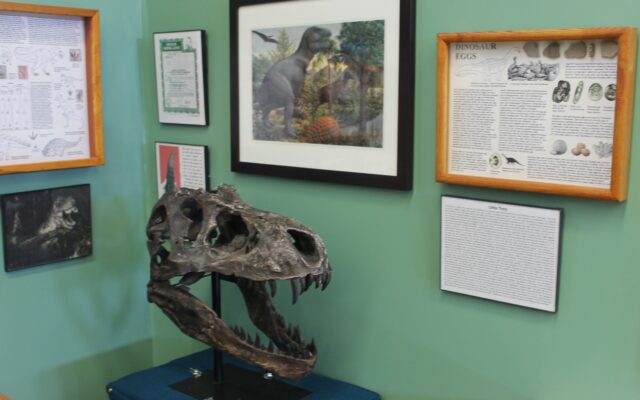
Why there are no dinosaur fossils in Maine
By Emily Burnham Bangor Daily News Staff
Maine’s state fossil is Pertica quadrifaria, a plant that lived nearly 400 million years ago during the Devonian period, fossilized remains of which were discovered in 1968 in Baxter State Park. Scientists believe it was the largest land plant of its time, and was among the first to evolve something like leaves.
While it’s an interesting plant to students of ancient botany, it’s safe to say it’s not quite as exciting a state fossil as, for example, Colorado’s Stegosaurus fossil, California’s saber tooth cat fossil or the giant sharks, mastodons or ground sloths from other states.
There’s a good reason for why Maine’s state fossil is a primitive plant and not a species of charismatic megafauna. There simply aren’t any dinosaur fossils and almost no giant mammal fossils to be found in Maine.
In fact, according to the Maine Geological Survey, there aren’t any fossils to be found in Maine at all, dating from a period of about 360 million years ago until around 1 million years ago.
Why is that? There are a few reasons, but the biggest one is that, essentially, almost all the fossils that did exist in Maine were scoured away by glaciers. During the Pleistocene Era (2.5 million years ago until 12,000 years ago), almost all of New England was covered in glaciers that chewed up the surface of what is now Maine, destroying the fossils that were closer to the surface.
Prior to that, Maine was subject to near-constant erosion for hundreds of millions of years, as the Appalachian Mountains and the surrounding geological formations were gradually worn down. The rocks that were left were mostly granite, which is volcanic in nature and doesn’t support fossils.
The fossils that remained in Maine were buried deep enough that the glaciers didn’t get to them, and date from the Devonian period or earlier. Back then, living creatures were either microorganisms, invertebrates, fish or plants. Hence, our state fossil: a plant.
According to the Maine Geological Survey, the “newer” fossils found in Maine tend to date from the last 12,000 years. They largely consist of shells of marine invertebrates, though a handful of whale, seal and walrus fossils have also been found — as well as a wooly mammoth tooth, found off the coast of Scarborough in 1959, and a mastodon tusk, found off the coast of Cushing in 2006.
That said, there probably were dinosaurs roaming what is now Maine. Dinosaur fossils have been found in Massachusetts and Connecticut, as well as in Nova Scotia, meaning they almost certainly had to have been in Maine as well. We’ll just never know completely for sure, as all the evidence was scoured away by the slow march of geologic time.